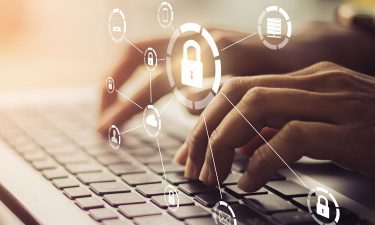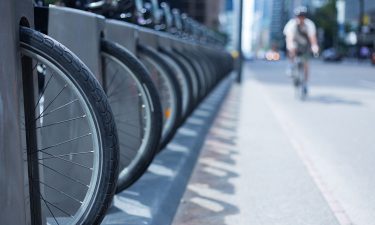Driving forward rail innovation with data and communication
Posted: 16 December 2019 | | No comments yet
Global Railway Review spoke to Richard Thomas, UKRRIN Industrial Fellow in Data Integration and Cybersecurity at the University of Birmingham about how the sector can drive innovation forward by communicating with each other and keeping the railways relevant by using data to deliver good passenger experience.


With the rise in digital advancements, there has been a lot of discussion about how the rail industry can move forward with innovation, and, not only that, but make sure those innovations and systems are protected against cyber-attacks. Coming from an academic background from the University of Birmingham, Richard Thomas has a unique perspective on the industry, and believes communication is key in this respect.
“I think it’s really important to learn from each other,” Richard said. “My research is driven by industry, rather than me finding problems and proposing novel solutions. My goal is to foster industrial relationships. So breaking those barriers, to try and say ‘come on, we’ve done things before. We’ve delivered great things. Let’s make security the next one’.”
But is he finding that the rail industry is reluctant to talk to each other, to share secrets?
“Talking to each other is a main challenge when driving innovation in the rail industry. We’re grown-ups; let’s say what our common challenges are and let’s bring about a community of interest for each topic and challenge it. It’s about bringing that culture so you can talk to each other,” Richard explained. “Yes, we are competitors at times, but we’re here together for the common good. In regards to competition, it’s not all negative. Competitive nature also delivers amazing things, because you then have speed and the need to bring forward innovations.”
Communication is a key challenge in driving innovation, and is even more of a challenge when we consider the rail industry on a global scale. “Shift2Rail in Europe is fantastic, because we’ve got all the big players defining projects,” he said. “But what is it like outside the EU? America, India, Brazil, and South Africa, for example, are countries that are really getting to grips with rail. How can they get involved in the conversation? If an international organisation like the UIC or Unife, could get involved, that would help. We want to hear what’s happening in Africa, Australasia and elsewhere. It doesn’t have to be physical meetings. We’ve seen high rules change with webinars and other innovations.”
“All you have to do is open Skype and it’s free. So IT digitalisation has really enabled things for the better, and can enable the sector to partake in more communication on a global scale to share ideas, agendas and research.”
Data is important to push the rail sector forward
Indeed, digitalisation is having a big impact on the sector, from enabling communication to improving systems and the passenger experience. Data is a pivotal aspect to making these changes happen. However, data is another aspect that Richard believes the industry should share more.
“We just sit on data. I agree some companies cannot share this because it might be commercially sensitive. However, in the UK, I think we’ve gone above and beyond; we’ve got Network Rail, RDG and TfL just being open about data and saying: ‘Here’s where the trains are in the country. Here are all of our ticketing prices…’ But I would love to see something international that could grow into something amazing.”
Data unlocks everything. And this is the scary thing.”
There is a lot of potential when it comes to data, so where can the industry begin in unlocking that potential?
“Data unlocks everything. And this is the scary thing. What does it unlock and what do we need to look at? Data is a Pandora’s box. We can do everything, but I don’t want us to be a ‘Jack of all trades’. We already do a lot, but we don’t do anything specifically great. The opportunities afforded to us by all of this rich data means we can spend a lot of time working on the broader picture, but we have barely scratched the surface. We’ve never actually tackled one problem well. I think it’s sort of unsung, this little picture.”
Ensuring effective cyber-security
But the topic of data inevitably leads on to the topic of security. How can the industry effectively share and utilise data when protecting it is so important?
“With cyber, it’s understanding what we’ve got,” Richard replied. “We sit on a lot of legacy equipment. But what does it do? How is it connected? And likewise, when we start connecting things up, are we connecting it for the right reason? Are we connecting it because the manual says we’ve got to do it? And does it say why? Because that introduces risk. Safety comes first. I think we need to try and get a combined model of safety and security before we plug something in. Do we understand what this exposure adds? How does it talk to the rest of our systems? How does it connect?”


A key to ensuring effective cyber-security is understanding how to be safe. Even simply reading emails can and has lead to cyber-attacks.
“Understanding is a key problem here. We’ve got a skills shortage in the sector, but we’re the forefathers of safe systems. We’ve got methods to prove safety, and I think it’s just about bringing the right kind of training around. So, for people on the front line – here’s how you stay secure when you’re at the computer and when you are changing systems. I’m swapping out a box and changing the configuration of the system. Am I doing it securely? By enabling this random feature, am I exposing myself to more threats that we haven’t documented? It’s about really understanding what things are.”
“Also, with emails. There was a cyber-attack a few years ago in the energy sector against a solar corporation via an email virus. The software took over a machine, so they could see everything that was going on in the operation and, if they wanted to, they could switch the entire grid off. That’s really interesting, and I think it shows how IT security matters. But, in this industrial world, there are a lot of question marks that we still haven’t been able to answer, or we need to understand the problem together.”
There are certainly some challenges in creating truly cyber-secure systems. What can the industry do in overcoming these challenges?
“Our national cyber-security centre in the UK is called the Cyber Body of Knowledge (CyBOK), and in the last few weeks they’ve published material on cyber-physical systems,” he explained. “It’s international, it’s public, and it’s free. It’s not a ‘how-to’ guide, but more like inspiring pointers. So, these are things you really need to think about and that can drive education.”
“It could be a one-week cyber awareness course, so you know not to plug in random USBs into the computer or things like that. I think it’s important to tell stories. If we can tell stories from the deep or hypothetical that can really change mindsets, that would be endlessly helpful. So, rather than ‘okay, I’m hearing the same thing over and over again’, it’s more about pointing out the actual impact. So, here’s what could have happened.”
Digitalisation and passenger experience
“My idea of digitalisation is trying to see what our end goal is,” Richard explained when discussing the broad idea of rail digitalisation. “So, things like travel management are an important aspect of rail digitalisation. It’s a really exciting issue, because this has been a problem for decades – practically since railways started. The train gets delayed, so how do I move things around my network in order to minimise the impact? That’s where digitalisation can be enabled, because humans can only do so much, but let’s say a digital system can look at what’s happened and can find similarities. For example, say there was an incident two years ago, and we can look at patterns and say ‘this thing worked to rectify that problem’. We need computers for that – I can barely remember what happened two days ago!”
Travel management is an important aspect of rail digitalisation.”
“Obviously capacity is also a huge aspect in our sector. So, one of the things for train operators is: ‘How can I run a stable service to, for example, events like a football game or a concert, etc. How do I make sure I have enough trains?’ A really exciting thing I’ve been seeing is some people have started providing hypothetical solutions for these situations, and it’s just waiting for someone to say, ‘you know what, let’s deploy it as a test. Let’s see what happens if I change that train from four coaches to 12, so I can move more passengers for that event and I save my service’. There are lots more opportunities for us.”
Keeping rail relevant
Digitalisation is changing the world as a whole, and the rail sector has had to make sure it is ahead of the curb to stay relevant. Transport is having a digital revolution of its own, with sustainability agendas impacting urban travel, and multimodality playing an integral part in the creation of smart cities. The railway, meanwhile, has been around for hundreds of years. How can it keep up with the digital transport revolution and remain sustainable when other forms of transportation are more convenient?”


Ensuring good end-to-end passenger experience is a way to keep the railways relevant.
“In the U.S., people don’t normally take the train, they fly, and it’s on selling that difference. I think the biggest problem in the U.S. is the fact that you don’t have any single infrastructure manager. I can jump on a plane from New York to Orlando once every hour,” Thomas said. “It’s that frequent! But the railways are good for sustainability and being green. There’s a lot of bad press about airplanes and other things like that, so maybe that will push it. With a country as big as the U.S., it’s not going to be a short hook ride to go from East to West by train. But, if you add up all the time it takes to travel from, say, the middle of New York to Washington, it’s probably going to be a lot better and quicker by train. It’s about pointing that out.”
“The multimodal experience is going to be important for the end-to-end passenger experience. You could go on a train journey, but then you need to get to your destination after that journey. So, we could offer car-sharing, bike-sharing, or other different modes of transport to make yourself green, but then, maybe, there are ways that you never thought of going. So, for example, I went on a train journey recently and, after that, Google told me to take the tube to my final destination. But I actually walked it as I worked out that it took the same amount of time.”
“That’s another opportunity and something I love about data. If we choose to share data with, say, Google etc, we can say that it takes a person this amount of time to walk should they choose to take a greener route, or, if they have an impairment, then it can add a few more minutes because this is what we’ve learned. We’ve got that data, we just need to try and connect it up to give passengers that better experience.”
Related topics
Big Data, Cyber-Security, Digitalisation, Multimodality, Passenger Experience/Satisfaction
Related organisations
UK Rail Research and Innovation Network (UKRRIN), University of Birmingham








